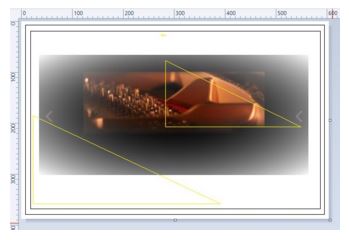
Mediterranea
A Journal of Cultural Anthropology and Ethnomusicology
( 1 /2018)
Monumenta
Dotium
Semiticarum

The Inscription
of Sa-am-su-iluna
The Bilingual Inscription Brit. Mus. 22,507 /Brit. Mus 38, 402.

Studi preliminari
L.W. King, Letters and Inscriptions of Ḫammurabi, (Vol. III , London, Luzac and Company 1900).
https://archive.org/stream/cu31924104781285#page/n199/mode/2up
Publications of the Babylonian Section, Volume 1, Issue 2
Amazon.it: University of Pennsylvania University M.
Karen Radner, State Correspondence in the Ancient World
https://books.google.it/books?isbn=0199354774
Anson F. Rainey-William M. Schniedewind-Zipora Cochavi-Rainey, The El-Amarna Correspondence (2 vol.)
https://books.google.it/books?isbn=9004281541
A. Leo Oppenheim, Letters From Mesopotamia: Official, Business, and Private Letters
http://oi.uchicago.edu/research/publications/misc/letters-mesopotamia-official-business-and-private-letters-clay-tablets
Daniel David Luckenbill, Ancient Records of Assyria and Babylonia Volume 2
http://oi.uchicago.edu/research/publications/misc/ancient-records-assyria-and-babylonia-volume-2-historical-records-assyria

"When Anu and Bel looked with joy upon Marduk, the First-born Son"
L'opening della Bilingual Inscription Brit. Mus. 22,507 /Brit. Mus 38, 402.
Composizione retorico-strutturale e linee interpretative antropologico-culturali
di Davide Polovineo
Agosto 8 2016. Red. finale Agosto 9 , 2016.
1 Introduzione
Presupponendo idealmente tutto il lavoro di ricostruzione, di riflessione, e di formattazione la Bilingual inscription Brit. Mus. 22, 507/ Brit. Mus. 38, 402, è un esame di coscienza minuto e tortuso della scuola degli scribi che hanno "tradotto" in forme decorose e sapienti l'immediata ars regendi di Sa-am-su-iluna. Visibilmente lo stile declamatorio della Inscription rievoca l'acerba e implacabile materia d'indagine racchiusa nelle fonti.
Immagini mitiche e icone fantasiose sono il "secretum" regale custodito metaforicamente dalla stessa forma: Marduk DU SAG [3] / DINGIR SAG-DU-MU-KU [50] Marduk māru ri-eš-ti-im / ili ba-ni-ia speditamente ri-configurano stilisticamente la Inscription nel mondo delle linee eterne della Image primordiale del First born Son "ri-disegnando" il campo semantico SAG DU "to create" nella "fosca turrita" "tensione lessicale "DU SAG -maru (to send) accadico".
Trasfigurato nei "ritmi di avventura" del pensiero strutturalista, Lévi-Strauss ci consente di affermare che il figurale del First Born Son "non è semplicemente strutturato, è già in se strutturalista; non è un semplice prodotto del pensiero simbolico, è il processo simbolico medesimo che diviene visibile come processo" [cit. in R. GIRARD, La voce inascoltata della realtà, Adelphi Milano 2006, p. 60) .
Tracciando nel testo sottili linee formali e figurali dense di "Images", gli elementi iconici intimi e mitici, eziologicamente, ri-creano gli avvenimenti regali:
"The care shown by Ḫammurabi and the other kings of the First Dynasty- afferma L. W. King- in fostering the worship of the principal Babylonian deities is perhaps most strikingly seen in the titles which they gave to the years of their reigns. From these we gather that not only were they constantly building or rebuilding temples for the gods, but they also beautified their shrines by making costly crowns and thrones and images in their honour" (cfr. L. W. KING, The Letters and inscription of Ḫammurabi king of Babylon about B.C. 2200, Vol. III, Luzac and Company, London 1900, Introduction XXXII).
Landscape figurale privilegiato per la comprensione della Kingship umano-divina accadica e per l'economic circulation system babilonese, il figurale divino del First Born Son è un sistema metrologico e semantico-rituale: l'immagine è portatrice di valori (Cowri-Image) che garantisce e assicura il successo dell'elaborazione culturale e cultuale collegata a simboli del potere economico.
La First Born Son Image (Marduk), pertanto, essendo Cowri Image è, metaforicamente, self-supporting bureaucratic organization: "Usando il concetto di progresso in maniera non deterministica- afferma Paolo Sibilla- e quindi diversa dagli evoluzionisti, (Thurnwald) sostenne che i vari portatori di valore tendono ad acquisire dei caratteri e delle funzioni monetarie durante un lungo e laborioso processo generativo che da forme iniziali molto primitive di oggetti-moneta conduce alla formazione e all'impiego, in talune società stratificate dell'antichità come quelle di Sumeria e Babilonia, di un genere di moneta che già incorporava, se non le qualità di mezzo "generale" di scambio, almeno i moderni caratteri di attributo del capitale e di standard di valore" (P. SIBILLA, Fondamenti per un'etnografia della moneta, in Tradizione e sincretismo. Saggi in onore di Ernesta Cerulli, edd. Valeria Cottini Petrucci e Marco Curatola, Le Balze Montepulciano 1998, pp. 282-283; cfr. R. THURNWALD, Die Menshlichte Gesellshaft in Ihren Ethnosoziologishen Grundlagen, Vol. IV: Werden, Wandel und Gestalttung der Wirtschaft in Lichte der VӧlkerKunde, W. de Gruyter, Berlin and Leipzig 1932).
Pertanto, essendo Gateway figurale, la first Born Son Image ri-configura il Royal Planner di Sa-am-su-iluna. Il concetto di rapporto (Change) tra i figurali economici reali e non reali, è strutturalmente generato dall'impressione monumentale associata a Marduk e alla regalità di Sa-am-su-iluna: "The lord of the household- afferma Oppenheim- wherther god or King, serves at the central point of an economic circulation system, and the concept of loyalty as its unifying ideological principle. Royal planning bent on enlarging the sphere of the King's influence by diplomatic or warlike means is a type of political thought rooted, as has been suggested, in mainly non-Mesopotamian attitudes. When, however, this is combined with the economic weight of a an efficient and self-supporting bureaucratic organization, imperialistic tendencies do not fail to materialize in Mesopotamia" (A. LEO OPPENHEIM, Letters from Mesopotamia, The University of Chicago Press, Chicago and London 1967, cit. p.7).
2 Analisi retorico-strutturale
La First born Son Image (cfr. anche DU UR-SAG-G[A] The valiant Son Brit. Mus. 38,303; pl. 215; No. 100 Sumerian inscription of Ammiditana) è una tonalità fantasiosa e stupefatta trasfigurata nei ritmi del mitico (UD + DINGIR+EN LIL) in cui circola anche l'aura vaga e incantevole degli elementi strutturali delineati da šarru ša šame u irṣiti [2] šarru da-num [32] šarru mu uš te-eš-mi [34] idealmente concatenati dall'áisthesis theîa (Anu, Bel, Marduk) e dal verbo palāsu / ŠI BAR [(6-87) Pret. ip-pa-al su-šum // lu ip-pa-al su-nim (ŠI ḪUL LA-(NE)-NE A IN-ŠI IN-BAR RI EŠ-A =to look upon, hapax nelle iscrizioni dell'old period)].
Superamento della "langeriana" mutua esclusione sentimental-formale del sacro, l'associazione lessicale UD ANA EN-LIL LUGAL AN KI-BI-DA-GE DINGIR MARDUK DU SAG custodisce performativamente (cfr. anche il leit-motiv della Performance of Sacred functions in W. ROBERTSON SMITH, Lectures on the Religion of Semites, nell'edizione della Sheffield Academic Press, Sheffield 1995, p. 46-47) il gioco sottilmente spregiudicato dello "spettacolare" mitico (showing): "When Anu and Bel, the king of heaven and earth, looked with joy upon Marduk, the First-born Son of EA and gave unto him the dominion over the four quarters of the world and called him by and exalted name among the Anunnaki, and established for him the foundation of Babylon like unto heaven and earth, then Marduk, the lord of his land, who is endowed (?) with Wisdom, unto me, Samsu-iluna, the king of his abundance, granted the whole of the world to rule, and with majesty he commanded me to settle his own land in security, and to rule the scattered peoples in prosperity for ever" (cfr. L.W. KING, op. cit., p. 205)".
Il "dato" analitico è estremamente importante: infatti nelle iscrizioni dell'old period l'associazione šarru+ DU SAG /SAG DU + NAM-AZAG-ZU è presente solo in questa iscrizione mentre i lessemi šarru+šar sono presenti nell'Inscription recording the building of a granary in Babylon ( Brit. Mus. No. 81-8-30; pl. 106; No. 59 11), šarru+ da-num in Fragment of an inscription (Brit. Mus. No. 36,255; pl..190, No. 86 Col. II 2) Inscription recording the cutting of the Nuḫuš-niši Canal (Louvre pl. 185, No. 95 2.4.43), Inscription recording the building of the temple E-ZIDA (Louvre pl. 182, No. 94, 18). Le costruzioni con šarru+ Marduk sono presenti in Inscription of Marduk-Šāpik-Zērim, King of Babylon (Brit.Mus. No. 26, 295); Inscription recording the building of a granary in Babylon ( Brit. Mus. No. 81-8-30; pl. 106; No. 59, 25), Bilingual inscription recording improvements in the City of Sippar (Semitic Version Brit. Mus. No. 12,216; pl. 97, No. 57, 2,7,27,42), Inscription recording the building of the Temple E-ZIDA ( L (Louvre); pl. 182, No. 94), Sumerian inscription recording the building of a Temple to the Goddess Ninni (Brit. Mus. No. 12,068; pl. 118; No. 61) e nella Louvre pl. 185, No. 95.
Mito e canonizzazione monumentale del potere (Inscription e pubblicità murale) garantiscono il successo della private enterprise babilonese: " As holdings became even more concentrated in the hands of large organitations throughout Babylonia- afferma Robert McC Adams- and as palace and temple interconnections with these private bodies were forcefully supported by the King, the trends seem to have converged (Goddeeris 2002, 393-398, 402). Under a strong king like Hammurabi, newly centralized exactions were at the same time being directly accumulated in the greatly enlarged royal palace establishment in Babylon" (R.McC ADAMS, Old Babylonian Networks of Urban Notables, in Cuneiform Digital Library Journal (2009)7, p.7).
In sintesi possiamo affermare che la monumentale pubblicità murale della Bilingual Inscription sia una operazione di marketing, costruita sulla First Born Son Image: il writing monumental system e l'operazione di marketing, occultamente, custodiscono l' "Idea of the progression in Babylonia".
Astutamente e cordialmente la "messa in scena"divina sorregge la struttura retorica:
A
When Anu and Bel, the KING of heaven and earth, looked with joy upon Marduk,
the First-born Son of EA
B
and gave unto him the dominion over the four quarters of the WORLD
and called him by and exalted name among the Anunnaki,
and established for him the foundation of Babylon
A1
like unto heaven and earth, then Marduk, the lord of his land,
who is endowed (?) with Wisdom, unto me, Samsu-iluna, the KING of his abundance,
granted the whole of the WORLD to rule,
and with majesty he commanded me to settle his own land in security,
and to rule the scattered peoples in prosperity for ever"
Nella costante ostinazione malinconica del parallelismo semitico e della forma compositiva ABA1, la struttura è, semplicemente, sciabordata dal sottile e schiamazzante gioco lessicale mitopoietico: Heaven and Earth (in A e A1), Marduk (in A e A1), King (in A e A1), Land (in A1), World (in B e A1).
Ulteriormente A1 è strutturato compositivamente in A B A1: in A e A1 è presente il lessema Land. Paradigmaticamente king e majesty associano B ad A1. Al centro della struttura è presente NAM-AZAG-ZU (hapax nelle iscrizioni dell'old period): "with Wisdom, unto me, Sa-am-su-iluna". NAM-AZAG-ZU, probabilmente ha un valore idiomatico indicante la creaturalità della "Sapienza".
A
like unto heaven and earth, then Marduk, the lord of his land, who is endowed (?)
B
with Wisdom, unto me, Samsu-iluna, the king of his abundance, granted the whole of the world to rule,
A1
and with majesty he commanded me to settle his own land in security,
and to rule the scattered peoples in prosperity for ever"
Associato ad A-KAL (potere/ facoltà/ capacità), nella fonte è presente anche il lessema ŠI-IG (41) che contiene l'idea "dell'umano fare-operare sapienziale regale" (Kingship): A-KAL IM-GA ŠI-IG- GAL- MU-TA BAD DINGIR ZAKAR. Pertanto la regalità di Sa-am-su-iluna è, probabilmente, ŠI-IG (operare sapiente) e A-KAL (facoltà, capacità, potere conferito) azioni performative (Performance of Sacred functions) sapienziali e regali di Sa-am-su-iluna associate alla figura e alla performance cosmogonica del First Born Son [e quindi al campo semantico SAG DU (to create) maru (to send)] e alla "figura" e alla prassi performativo-sacrale di NAM-AZAG-ZU.
3 Linee interpretative antropologico-culturali
La stessa struttura retorica, mirabilmente, de-costruisce l'ancestrale "format" del potere a due piani. "Con il sistema di potere a due piani- afferma Burkert- gli ordini e le azioni regali possono assumere la forma di comandamenti divini. Un esempio è un testo di Samsuiluna [...]. Il dio supremo , Enlil, parla a Zababa e Ishtar, suoi figli, ed essi comunicano "giubilanti" il messaggio al re:" Samsuiluna, semente di re, Enlil ha fatto grande il tuo destino; noi saremo al tuo fianco, uccideremo i tuoi nemici [...] ma tu dovrai costruire le mura di Kish più alte di ogni cosa precedente. Il re obbedisce, va in guerra, vince, e costruisce a Kish il tempio di Zababa e Ishtar. (cit. in W. BURKERT, La creazione del sacro. Orme biologiche nell'esperienza religiosa, Milano, Adelphi 2003, p.132).
Evidenziando il tema fondamentale del "potere a due piani (nelle forme del comandamento divino", del Signs-Pattern cosmogonico e della Performance of Sacred Office della Myth and ritual School), R. Girard ci permette, richiamando metodologicamente Lévi-Strauss, di analizzare il "destino già scritto" della First Born Son Cowri-Image: "Il destino già scritto dello strutturalismo è allargare sempre più le frontiere del significato inteso in chiave strutturale" (R. GIRARD, La voce inascoltata della realtà, Adelphi, Milano 2006, cit. p. 75).
Ulteriormente possiamo affermare che il destino già scritto della Cowri Image è allargare sempre più i confini del concetto di valore e delle modalità particolari di pensiero e ragionamento (cfr. P. SIBILLA, op. cit., p 288). L'immagine divina può essere impiegata per il potere d'acquisto: il dio , infatti, è un portatore di valori (Cowri-God).
Il pubblico "pagato", inoltre, percepisce strutturalmente l'agire drammaturgico del First Born Son Cowri Image che è epifania dell'evidente significato (valoriale) inteso in chiave strutturale e figurale. Antropologicamente, è lecito richiamare il tema della worshipping community:" Public acts- afferma Robertson Smith- which to be effective, i.e acceptable to the gods, required to be performed with due attention to rule and precedent, were necessarily conducted and led by some responsible representative of the worshipping community, and in this representative function the germ was already contained out of which a stated priesthood could not fail to grow, as soon as ceremonies of religion became at all copious and elaborate". (W. ROBERTSON SMITH, op. cit., p. 45).
Ulteriormente possiamo affermare habermasianamente che il modello drammaturgico della worshipping community avendo una propria struttura e un proprio compito "non si riferisce in prima linea né ad un attore singolo, né al componente di un gruppo sociale, bensì a partecipanti all'interazione che creano l'uno per l'altro un pubblico (n.d.r anche pagato) davanti al quale essi si rappresentano" (cfr. J.HABERMAS, Teoria dell'agire comunicativo, Il Mulino, Bologna 1980, cit. p. 156).
Pertanto la struttura dell'opening della Inscription è una pragmatica formale: "Ogni consenso prodotto in modo argomentativo nelle condizioni di una situazione linguistica ideale, può essere considerato come criterio per il soddisfacimento delle pretese di validità di volta in volta tematizzate". Nella struttura Marduk "pre-tende" il suo palcoscenico, il suo show e il suo pubblico (n.d.r. pagando !) e Sa-am-suiluna soddisfa le "pre-tese" del First- Born- Son provocando il "verificarsi di uno stato auspicato" meta-strutturalmente, e "scegliendo i mezzi che nella situazione data promettono successo in maniera adeguata" (nell'oltre strutturale) all'essere stesso del figurale del First-Born-Son.
Marduk si ri-presenta pubblicamente e figurativamente adempiendo le aspettative di uno "sperare originale" (et Rombach docet): e la singola impressione (Eindruck) produce "commozione" non vertendo "più" su rapporti formali [cfr. D. POLOVINEO, L'estetica sacrificale di Eric Gans: dal paesaggio sacrificale cruento all'origine delle forme estetiche, in "Studia Patavina" 55 (2008), cfr. nota 80 p.187].
|